Lisbon Tourism Information

Lisbon is Europe's second-oldest capital (after Athens), once home to the world's greatest explorers, like Vasco da Gama, Magellan and Prince Henry the Navigator, becoming the first true world city, the capital of an empire spreading over all continents, from South America (Brazil) to Asia (Macao, China; Goa, India). Lisbon is a great attractive city, often overlooked by other bigger capitals. Come to Lisbon for its culture, one of the world's great historic cities, with characteristic and surprising sights, cultural treasures, and a beautiful setting that make it a paradise for walkers and photographers. Other advantages of Lisbon are it’s value for money, location from Europe, warm and moderate climate, pristine beaches near the city, good size to walk around and take a short weekend break and last but not least it offers a good variety of surroundings, incredible tourist attractions, world-class golf and fun in Europe's largest casino in Estoril, surfing in Cascais or escaping to a natural park in Arrábida and dolphin-watching in Setúbal, some of the many things to keep you busy in Lisbon whilst visiting.
Lisbon's appealing climate is amongst the hottest of any European capital city. With extremely mild winters and plenty of hot summer weather.
Springtime temperatures are already quite hot and regularly hover around 25°C, while in the very heart of the summer, climate extremes and strong sunshine cause peaks of more than 35°C. Taking precaution of the direct sunlight and having sun protection creams and glasses is essential. August is predictably the hottest month in Lisbon .
December and January are usually the coldest weather in Lisbon, although daytime temperatures still average 15°C.
The best time to visit ranges from March to May and end of September to mid November. However, Lisbon is a year round destination, so no matter when you come, weather is not far from bright.
When arriving to Lisbon, the most common way is by plane. The capital only has one international airport so all connections and flights arrive at the same place, making it easier to plan your journey. The airport is located 9 km from the city centre, the Metro is the cheapest and the quickest means of transportation from having been connected to the red line, which can get you from the Airport to Saldanha station in just 20 minutes. From there you can switch to other lines. A one-way ticket is just €1.50 (plus €0.50 card cost) or a daily pass for €6.40 which includes all other means of transport. Metro trains run around from 6am until 1am daily.
You can also take the bus from the airport.
There are three major kinds of buses: Aerobus 1,2 &3, City buses and night bus.
- Aerobus costs €3,60 if you buy it online. It operates from 7.30am to 23h and goes to the city centre.
- Normal busses can also be a good option if your accommodation is along the route of the bus. You can pay with the electronic card which also costs €1.50 one way.There are four routes for city buses, line number 705, 722, 744 and 783.
- If you arrive late or at night, you can take the night bus number 208. The first night bus departs the Airport at exactly 11.42pm and later ones at 12:12am, 12:42am, 2:42am, 3:42am, 4:12am and the last one at 4:42am.
Once in the city, Lisbon has 4 metro lines, numerous busses and a tram network to get you around the points of interest. There is also a ferry to take you to Cacilhas, which also is part of the transport. To combine the transport modes Tram, Metro and ferry (Carris/Metro/Transtejo (Ferry to Cacilhas)) and use it multiple times it’s best to get the electronic card of the city, which costs €0.50, valid for one year. Read more about the card here, Lisboa Viva card. Also you will see plenty of "tuk-tuk" style scooters in Lisbon offering rides to tourists. They are often expensive and should always ask the price before getting in. Tours in these cost around €40/50 for one hour tour.
✔️Tip: For visitors, the best card to buy is the basic white card (see image below), which allows you to up balance or load daily travel passes. Each day travel pass costs €6.40 for unlimited rides on all transport modes in Lisbon city, (except the Metro in Sul). Below you can find the transport maps available for download of Lisbon:

Lisbon is one of Europe's most captivating and picturesque capitals, built on a series of hills with scenic views from every angle. The great thing about Lisbon, is that the city is the only European capital with sunsets on the sea, close to sandy beaches and with one of the world's largest state-of-the art aquariums. The city is lively but serene and melancholic with an insatiable appetite for long dinners, coffee breaks and nightlife. It’s also a great spot for culture seekers, with World Heritage monuments and singular museum treasures, from international design and contemporary art, to treasures from when the East met West. Lisbon remains a safe haven, it escaped the WWII, therefore keeping a traditional look but in a modern and open minded society, which welcomes foreigners and tourism with open arms.
Below are the highlights of what to see and do in Lisbon:
- Jeronimos Monastery: The resting place of explorer Vasco da Gama is a church built in the 1500s as part of a magnificent monastery. Its cloisters are considered among the most beautiful in the world and it has been listed as a World Heritage Site. It’s free to visit the first Sunday of every month. Also adjacent to the same building is the National Archaeology Museum, which for a combined ticket of €12 you can visit both places. To get there take bus 201, 714, 727, 728 or 751 or tram 15E to Mosteiro dos Jerónimos stop.
- Belem Tower: The city's icon is also a symbol of the Age of Discovery. Built in the early 1500s, this ornate watchtower has been declared a World Heritage monument by UNESCO. It stands out over the mouth of the Tejo, guarding the entrance to the city's harbour. It is a symbol of maritime Lisbon, and is reached via a walkway raised out over the water on timbers. Inside it is filled with intricate stonework and has wide Atlantic views. To access the tower, tickets cost €6. To get there take bus 729 or tram 15E to Largo da Princesa stop.
✔️Tip: Also visit the tower at night, when little or no tourists are around and take great pictures with the tower lit up.
- St George Castle: From the millennium-old battlements of this castle you have a bird's-eye view of the city in the company of roaming peacocks. Inside is a small archaeological museum and down the hill are a couple of terraces with perfect postcard views over Alfama, the city's medieval village-like neighborhood. Tickets cost €10. To access the castle take bus 737 to Castelo stop or also trams 12E/28E stop nearby the area. Note that the castle is very popular at weekends and long queues can be expected.
- Alfama: there are lots of free walking tours in Lisbon, many hosted by students who benefit from tips. These tours will walk you around Alfama, Lisbon’s most fascinating district where history can be told on every narrow streets.Be ready for culture, history and great views from the viewing platforms in the area!
✔️Tip: This tour has something for everyone: history, yes, but it also explores Lisbon’s music, fado, its flag, its patron saint and the famous azulejos (tiles) that characterise the city. Take a camera and flat shoes for the hills and cobblestones.
- Bairro Alto by Tram 28, to see this historical area the best idea is to hop aboard a tram up and see Lisbon’s steep hills. Take the classic wooden tram 28 through Lisbon's prettiest and most historic streets. Starting at the foot of Bairro Alto, the vintage carriage takes you through the shopping districts of Baixa and Chiado before it reaches past the churches and castles on the cobbled hills of the Alfama and Graça neighbourhoods.
✔️Tip: Taking tram 28 is extremely popular and busy. To guarantee a seat take the tram from its terminal stations at Campo de Ourique / Prazeres or at Martim Moniz, and enjoy the entire ride which is 30 min. Note that the tram number is designated as 28E. Also, avoid carrying any valuables aboard the tram if possible and safeguard your mobile, handbag and wallet as this ride is infamous among locals for being one which pickpockets target as it is mainly used by tourists. The tram runs every 15 mins. Another option is to take tram 12E, which runs a very similar route and is less crowded. Both depart from Largo Martim Moniz bus stop.
- Alcantara: this area is famous for it's bridge, the Arabic word "al-qantara", meaning bridge, is where the Ponte 25 de Abril bridge leaves land to soar over the Tagus. This bridge is the sister to the Golden Gate Bridge in San Francisco, USA. The Alcântara area, together with the Doca de Santo Amaro, draw weekend and evening crowds to its many restaurants and bars based in former warehouses. On the other side of the highway and train tracks is the rest of this neighbourhood, with residential blocks surrounding the new LX Factory, formerly an industrial site. To get closer to the bridge take Tram 15E.
✔️Tip: The best views of the bridge can be appreciated from Belem Tower.
- Parque das Nações: Contrasting with the city's oldest neighborhoods is this 21st-century district showcasing striking contemporary architecture with Europe's longest bridge as the backdrop. It includes a state-of-the-art aquarium, a casino, and a wonderful waterfront promenade. Also take the Lisbon cable-car across the front shore to see the great views from above, prices are €3.95 one way. To get to the Parque das Nações, take the red metro line to Oriente station.
The following destinations are easily accessible from Lisbon and can be a nice day out of the city if you are staying for a longer period of time:
- · Sintra This aristocratic hill town to the west of the city is studded with fairytale palaces, botanical gardens and wild woodlands. It is famous for its misty, cool microclimate, which is one of the main reasons royalty would retreat here from Lisbon during the hot summers. The train to Sintra departs from Rossio station and takes about 40 minutes.
✔️Tip: Best to take the train in the morning or midday and see the views when its a clear day. The trip to Sintra although is short, walking to the different locations takes time, allow at least half day to visit Sintra.
The main highlight of Sintra, is its Moorish Castle, at the top of the hill, built as a military fortress around the tenth century by the Muslim occupiers of the Iberian Peninsula. It acted as a watchtower over the Atlantic Coast and the northern territories, functioning as an observation post of the city of Lisbon. To access it you can walk up a well built trail to the mountain, taking 45 min upwards. The walk has many interesting stops along the way, with many viewing points, WC, cafe, authorised climbing spots and well singed posted along the way. Another option is to take Tuk-Tuk style rides to the top, but they often overcharge. However coming back it only costs €5 when you share the ride down.
- Cascais and Estoril: These neighbouring beach towns are the best of the city's seaside suburbs. Destinations in themselves, they are connected by an Atlantic-front promenade. The region's best beaches (Adraga, Guincho and Grande) are found on the coastal road north, beyond Cascais. However if you don't drive and take the train, the beaches (Praia) of Tamariz, Das Moitas and Da Duquesa are very pleasant to spend a few hours soaking up the sun, swimming and enjoying local restaurants along the promenade. Also areas of interest are the Estoril Casino, Cascais town centre, Boca de Inferno and Farol da Guia. From Cais do Sodré station, the coastal train to Cascais and Estoril leaves every 20 minutes and takes about 40 minutes for €4.50 return.
✔️Tip: Walking to the Farol da Guia (lighthouse) can take around 45 min from Cascais town centre, the walk is very pretty, interesting sites along the way with cafes and snack bars to recharge energy. The walk is mainly along the coast line, also suitable to ride the bike. Take note, that on sunny days, the sun is always in front of you when heading towards the lighthouse. Adequate sun protection, glasses and water should be carried.
Title
Caption
Title
Caption
Title
Caption
Title
Caption
Title
Caption
Title
Caption
Title
Caption
Title
Caption
Title
Caption
Title
Caption
Title
Caption
Title
Caption
Title
Caption
Title
Caption
Title
Caption
Title
Caption
Title
Caption
Title
Caption
Title
Caption
Title
Caption
Title
Caption
Title
Caption
Title
Caption
Title
Caption

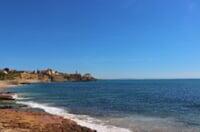
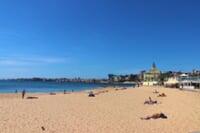
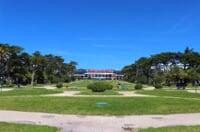
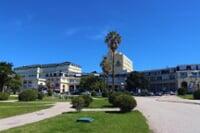
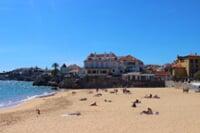
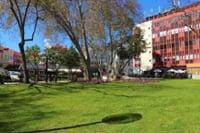
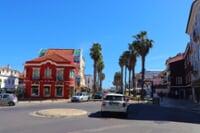
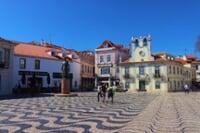
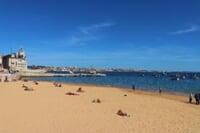
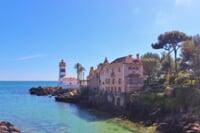
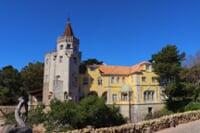
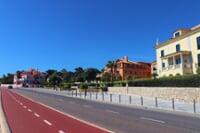
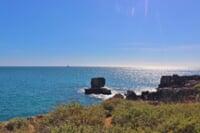
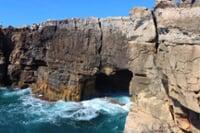
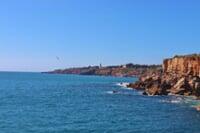
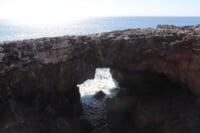
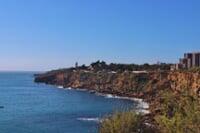
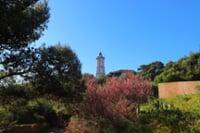
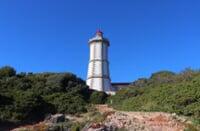
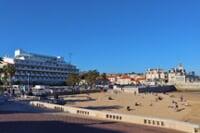
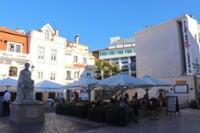

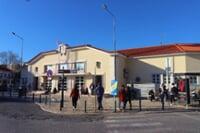
Lisbon has a very active nightlife, offering everything from clubs and bars to traditional Fado music, international concerts to fantastic theatre. The Bairro Alto area is considered the entertainment centre but there are various other party destinations. The guide Follow Me Lisboa lists all the major events and venues in the city.
A good way to start the evening would be to have some late afternoon cocktails in a café in the Chiado square, before going to one of Bairro Alto's various nightclubs. These venues can be followed by pre-dawn partying and relaxing at the docks of Alcântara and in the Santos district, with various bars open until sunrise.
For the more discerning visitor, classical music can be enjoyed at venues including the Calouste Gulbenkian Foundation and Culturgest, while theatres such as Dona Maria II National Theatre offer contemporary works and classical plays. Additionally, there is good opera held at São Carlos Theatre.
Fado music is popular in Alfama and Lapa, with many excellent venues scattered across the area. Furthermore, concerts are held at Atlantic Pavillion and Coliseu dos Recreios, featuring famous bands and artists from around Portugal and abroad.
Shopping in Lisbon cna be a treat for lovers and those who want to find souvenirs, will find it easy to choose the perfect gift! There are also plenty of major shopping malls, including two of Europe's largest, namely Centro Colombo and the Amoreiras Shopping Centre. Some of Lisbon's smaller independent shops can be found downtown in the Baixa quarter and strolling through these streets, visitors can marvel at the unique exteriors of shops lining the pavement.
The most famous market in Lisbon has to be the Feira da Ladra, held every Tuesday and Saturday on the Campo de Santa Clara. Here, bargain hunters can sift through clothing, hand-made goods, CDs, books, antiques, furniture and second hand bits and pieces.
❗Attention: When shopping in Lisbon, tourists should beware of pickpockets, specially also be vigilant of people asking for help or requesting signatures on the street.
Portugal might surprise you as being one of the cheapest places to stay in Hotels in Europe. Specially during the lower season, Hotels in the city centre of Lisbon can be found at €30-35 per night. Always book early to grab the best deals. Hotels, hostels and resorts are widely available throughout the city, depending on your budget.
Private accomodation is also very popular now with Airbnb or Booking.com providing a more personal touch to your stay like a local. When looking for places to stay always make sure you stay near a metro or tram station for ease of transportation around the city.
For a first time visit to Lisbon, the city is not that big as other Europeans capitals and it takes not more than a day or two to see most highlights. However, the city is situated on many hills, making it more difficult to walk around in hot weather specially. Taking public transport and visiting other areas outside of Lisbon is also recommended, making the trip more enjoyable. Three or 4 nights is enough to see Lisbon. If you like to discover and learn more about the history, visit the many museums and relax by the beach, then 7 days would be a more relaxing experience in Lisbon.
Lisbon Photo Slide 📷

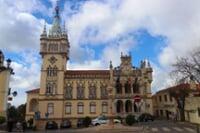
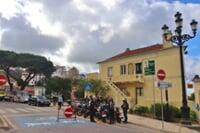
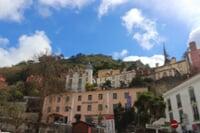
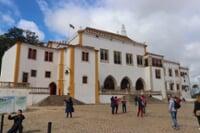
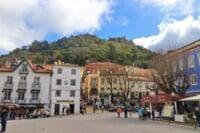
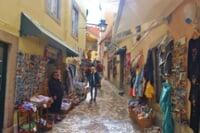
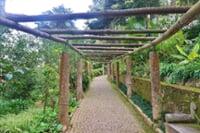
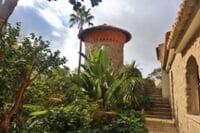
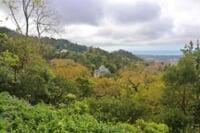


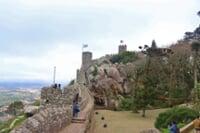
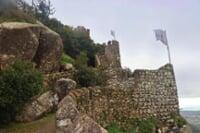
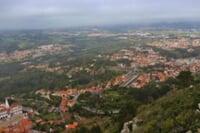
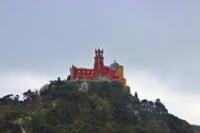
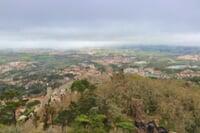
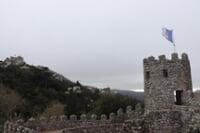


































.png)